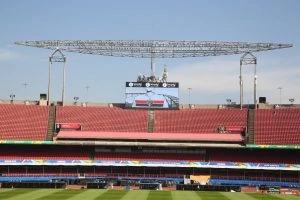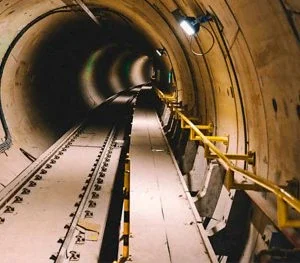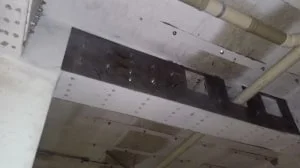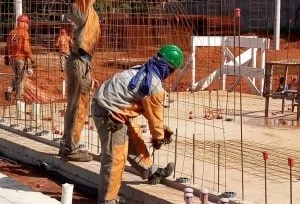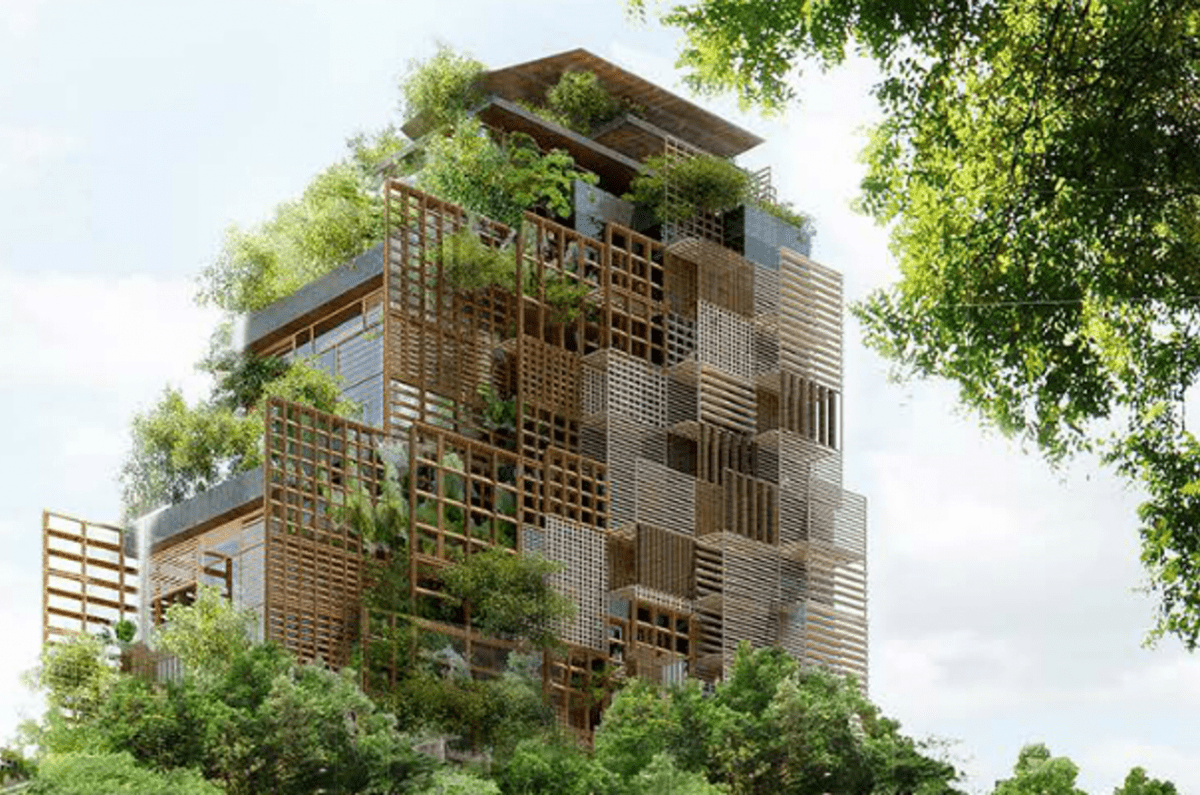History
As part of the modernization of the stadium Cícero Pompeu de Toledo (Morumbi), two new information screens were installed for fans. They are positioned in the central strip of the upper ring of the stands, one on each side. The panels were installed with the objective of being ready for the opening of the Copa América held on June 14, 2019. Each panel has an area of 154.82 m², measures 20.16 meters wide by 7.68 meters high, has an image resolution of 2016 x 768 pixels and weighs 24 tons.
The set of panels was mounted on a metallic structure fixed on the last steps of the stands, which is molded in concrete.
As can be seen in the photo, much of the set extends over the limits of the stadium’s upper ring, which makes it exposed to the action of the wind, thus requiring a fastening system with extreme strength and reliability.
Due to this condition, the company Ecometálica responsible for the installation of the metallic structure, chose for carrying out the fixation with the WQI 44 Plus Chemical Anchor and the Ø 3/4″ UNC X 235 mm threaded studs in 1035 steel supplied by Walsywa.
This choice was made due to factors such as long-standing knowledge and trust of the Walsywa brand and mainly because the product has European ETA Certification, F120 and F180 fire resistance reports and a low VOC (volatile organic compounds) emission seal.
Prior to the purchase and installation of anchor bolts, Walsywa’s Engineering sector provided all technical support in order to collaborate and ensure the specification process of the fastening system by performing fastening calculations and carrying out practical traction tests on site of the application.




